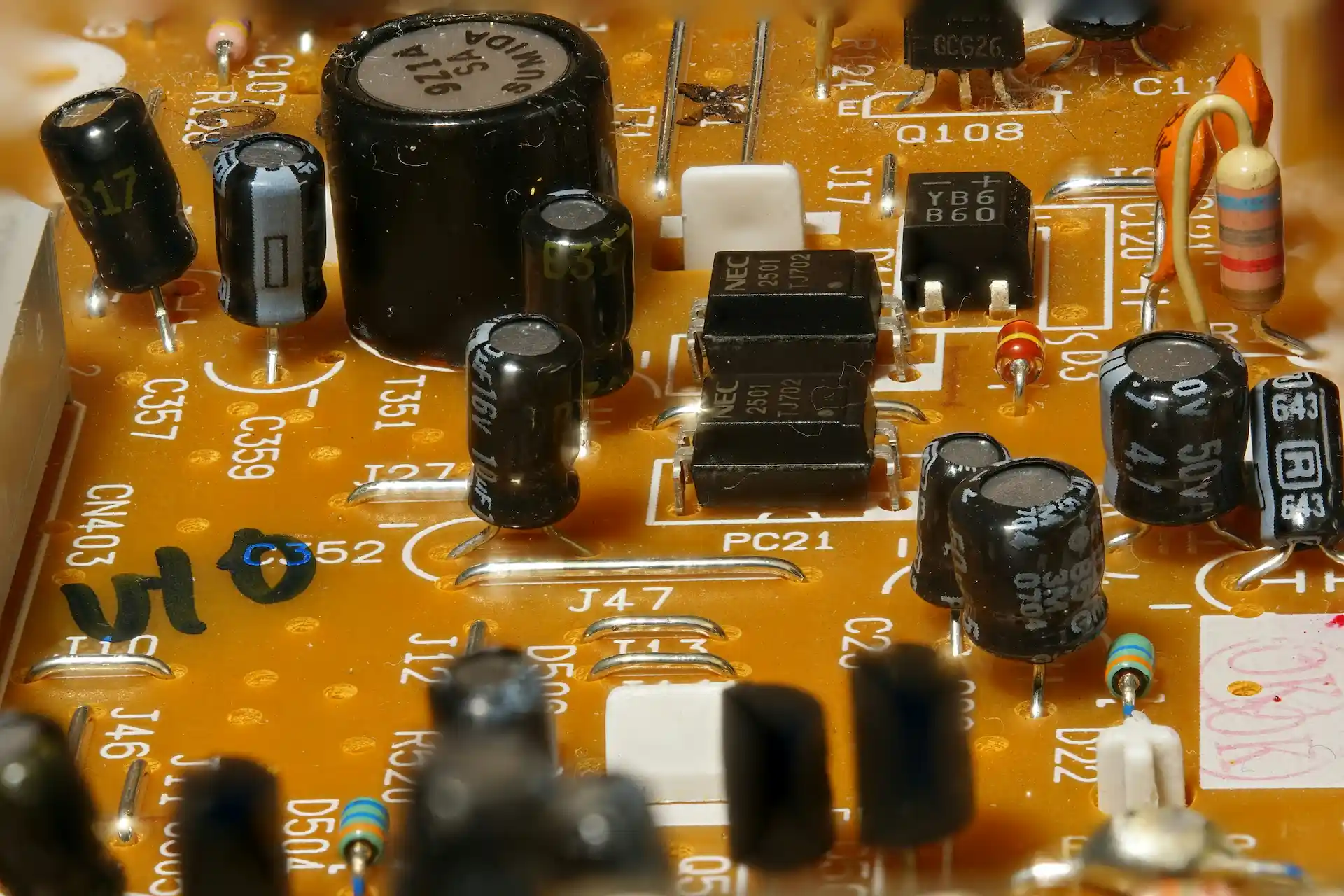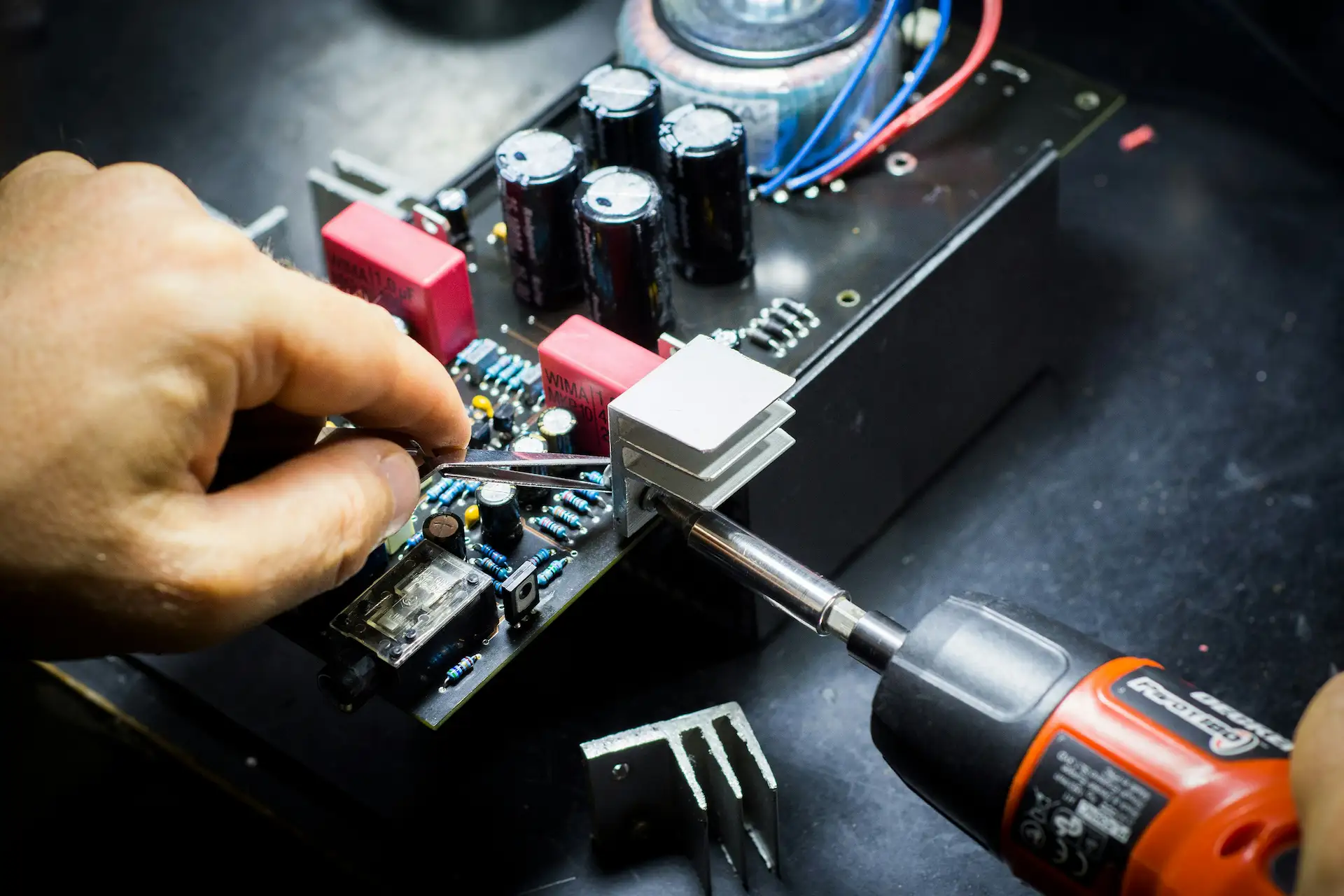What Are Protection Features in Electronics?
Protection features are the guardians of electronic systems, designed to prevent damage from electrical faults like overcurrent, overvoltage, undervoltage, and reverse polarity. These mechanisms act as a safety net, ensuring your circuits and devices operate within safe limits, even under abnormal conditions. Without them, a single power surge or wiring mistake could toast your components, halt operations, or worse—spark a fire hazard. From fuses that sacrifice themselves to save the system to sophisticated ideal diode controllers that block reverse current, protection features are essential for reliability, longevity, and compliance with safety standards. Whether you’re powering a smartphone, a car, or an industrial robot, these safeguards are the difference between a robust design and a costly failure. At CustomPowerLabs, we specialize in crafting custom protection solutions that match your specific needs, keeping your electronics bulletproof no matter the challenge.
Types of Protection Features
Fusing
Fuses are the frontline defenders against overcurrent. When current exceeds a safe threshold—due to a short circuit or component failure—the fuse’s metal element melts, breaking the circuit and stopping the flow before damage spreads. Available in fast-blow (for quick response to sensitive circuits) and slow-blow (for handling inrush currents), fuses are a simple yet effective shield against fires and fried components. Modern designs also include resettable fuses (PTCs) or electronic fuses (eFuses), which offer programmable trip points and eliminate manual replacement, making them ideal for custom applications where downtime isn’t an option.
Ideal Diode Controllers
Ideal diode controllers take diode functionality to the next level. Unlike traditional diodes, which allow current in one direction but incur voltage drops and power loss, ideal diode controllers use MOSFETs to mimic an “ideal” diode with virtually no forward voltage drop. This makes them perfect for preventing reverse current in battery systems, OR-ing redundant power supplies, or protecting against backfeeding in high-efficiency setups like data centers or electric vehicles. Their low-loss performance boosts system efficiency, reduces heat, and saves energy—key advantages in power-hungry applications.

Overvoltage Protection (OVP)
Overvoltage protection (OVP) steps in when input voltage spikes beyond safe levels, threatening to overstress or destroy sensitive electronics. Methods include clamping (using transient voltage suppressors or Zener diodes to limit voltage) and crowbar circuits (which short the supply to trip a fuse or breaker). OVP is critical in environments prone to transients—like automotive systems facing load dumps or industrial setups hit by grid surges. Custom OVP solutions can be tailored to specific voltage thresholds and response times, ensuring your system shrugs off spikes without breaking a sweat.
Undervoltage Protection (UVP)
Undervoltage protection (UVP) guards against the opposite problem: voltage dropping too low to sustain proper operation. In battery-powered devices, for example, a sagging voltage can cause brownouts, erratic behavior, or data corruption. UVP circuits monitor voltage with comparators or supervisors, cutting power or signaling a shutdown when levels dip below a set point. This feature is a lifesaver in applications like IoT sensors or medical devices, where stability is non-negotiable. Custom UVP designs can add hysteresis to prevent oscillation and integrate with broader power management strategies.
Reverse Polarity Protection
Reverse polarity protection saves your electronics from the chaos of backward power connections—a common risk in user-installed systems like automotive gear or DIY gadgets. Simple solutions use a series diode to block reverse current, though this drops voltage. Shunt diodes paired with fuses blow on reversal, while advanced MOSFET-based designs block reverse flow with minimal loss and no extra components. This feature is cheap insurance against human error, and custom implementations can optimize efficiency, size, and cost for your specific design.

Applications of Protection Features
Protection features are indispensable across a wide range of industries and devices. Here’s where they make a difference:
- Automotive: Battery management systems use reverse polarity protection to handle miswired jumpstarts, while OVP and fusing protect infotainment and ADAS from voltage spikes.
- Industrial Automation: Motor drives and PLCs rely on OVP and UVP to survive power fluctuations, with fusing preventing catastrophic shorts in high-power setups.
- Consumer Electronics: Smartphones and laptops lean on UVP to manage dying batteries and reverse polarity protection to survive charger mix-ups.
- Renewable Energy: Solar inverters and wind controllers use ideal diode controllers to prevent backfeeding and OVP to handle variable inputs.
- Medical Devices: Life-critical equipment demands fusing, OVP, and UVP to ensure uninterrupted operation and meet stringent safety regs.
- Aerospace: Avionics systems need all these protections to endure extreme conditions and maintain mission-critical reliability.
Benefits of Custom Protection Feature Designs
Generic protection components get the job done, but custom designs elevate your system to new heights. Here’s why:
- Precision Fit: Tailored trip points, response speeds, and integration match your exact specs, eliminating guesswork and overdesign.
- Smaller Footprint: Combining features into a single solution shrinks PCB real estate—critical for compact devices like wearables or drones.
- Cost Efficiency: For large-scale production, custom designs cut part counts and streamline assembly, slashing overall costs.
- Unmatched Reliability: Built to withstand your specific stressors—think temperature swings, vibration, or EMI—ensuring uptime in harsh environments.
- Safety & Compliance: Custom solutions align with industry standards (ISO, IEC, UL) out of the box, simplifying certification and reducing risk.
- Future-Proofing: Scalable designs adapt to evolving needs, keeping your system relevant longer.
At CustomPowerLabs, we don’t just add protection—we engineer it to enhance your design’s performance, durability, and value from day one.
FAQs About Protection Features
What’s the difference between a fuse and a circuit breaker?
A fuse is a single-use protection device that blows when excessive current flows through it, requiring replacement. A circuit breaker, on the other hand, trips and resets automatically or manually, providing reusable protection.
Key Differences:
- Fuses: One-time use, fast response, inexpensive.
- Circuit Breakers: Reusable, adjustable trip settings, suitable for high-power applications.
- eFuses: Electronic fuses that combine resettable protection with programmable features for enhanced reliability.
How do ideal diode controllers improve efficiency?
Ideal diode controllers replace traditional diodes with MOSFETs, significantly reducing forward voltage drop and power dissipation.
Benefits:
- Higher Efficiency: Minimizes heat and energy losses in power distribution.
- Lower Voltage Drop: Ideal for battery-powered and high-current applications.
- Improved Thermal Management: Reduces heat generation, enhancing system reliability.
These are widely used in **data centers, electric vehicles, and industrial power systems** where efficiency is crucial.
When should I use overvoltage protection (OVP)?
Overvoltage protection prevents excessive input voltages from damaging sensitive circuits. It’s especially useful in applications where voltage spikes or unstable power sources are common.
Recommended Applications:
- Automotive Electronics: Protects against voltage spikes from alternators.
- Industrial Equipment: Safeguards against power surges and transient spikes.
- Outdoor & Remote Systems: Ensures resilience against lightning-induced surges.
Implementing OVP is a small investment compared to the cost of repairing or replacing damaged equipment.
Can undervoltage protection (UVP) prevent data loss?
Yes, undervoltage protection is critical in systems where voltage drops can cause unexpected shutdowns or corrupted data.
How UVP Helps:
- Safe System Shutdown: Prevents sudden power loss that can corrupt files.
- Battery Management: Ensures proper discharge limits to extend battery life.
- Embedded & Server Systems: Triggers fail-safe operations to protect mission-critical data.
Is reverse polarity protection necessary for all devices?
While not always required, reverse polarity protection is essential for devices that may be connected incorrectly by users.
Best Use Cases:
- Field-Installed Equipment: Prevents damage from incorrect wiring.
- Consumer Electronics: Adds an extra layer of safety in DIY setups.
- Automotive & Industrial Applications: Avoids expensive failures due to accidental polarity reversal.
Using **MOSFET-based reverse polarity protection** is a modern approach that minimizes voltage drop compared to traditional diodes.
What’s the best way to protect against transient voltage spikes?
Transient voltage spikes occur due to sudden power fluctuations and can severely damage sensitive electronics. The best protection methods include:
- TVS Diodes (Transient Voltage Suppressors): Absorb high-voltage surges quickly.
- Metal Oxide Varistors (MOVs): Commonly used in AC power lines to clamp surges.
- Capacitor-Based Filtering: Helps smooth out voltage transients.
How do I choose the right overcurrent protection for my system?
Overcurrent protection (OCP) prevents excessive current draw that could damage components or cause overheating.
Types of Overcurrent Protection:
- Fuses: Simple and inexpensive, but require replacement after tripping.
- Circuit Breakers: Resettable, making them ideal for high-power applications.
- Current-Limiting ICs: Automatically regulate current flow for sensitive electronics.
The right choice depends on the application and power level you need to protect.
Need rock-solid protection for your next project? Reach out to CustomPowerLabs—let’s design a solution that keeps your electronics safe and unstoppable!

